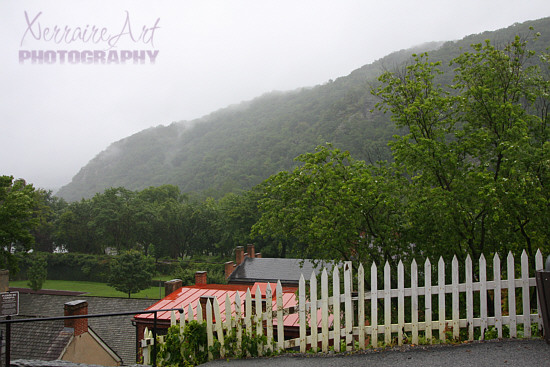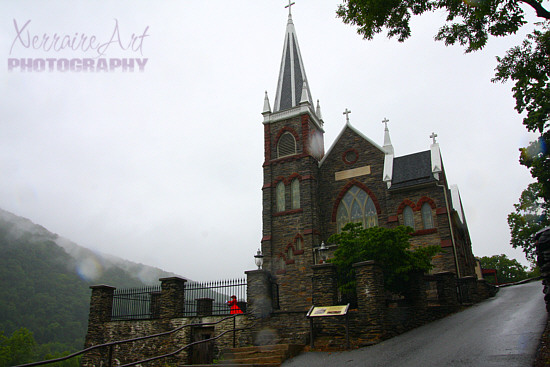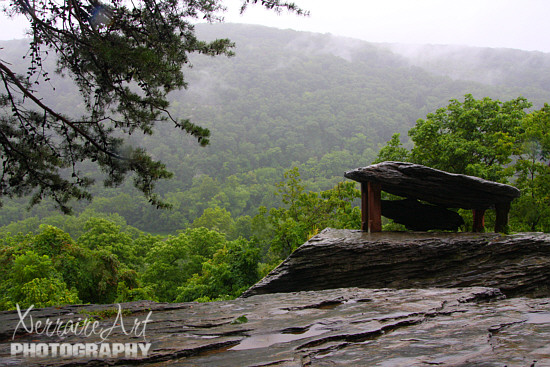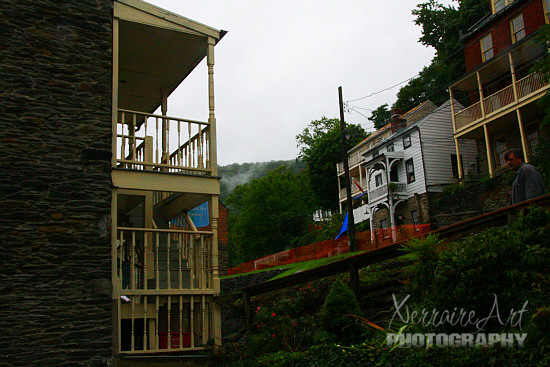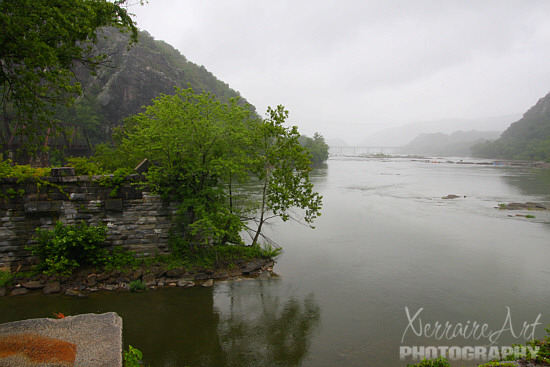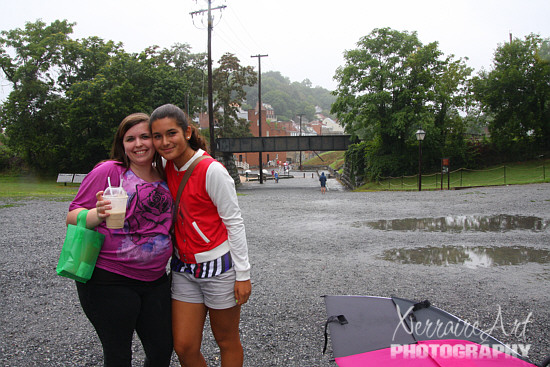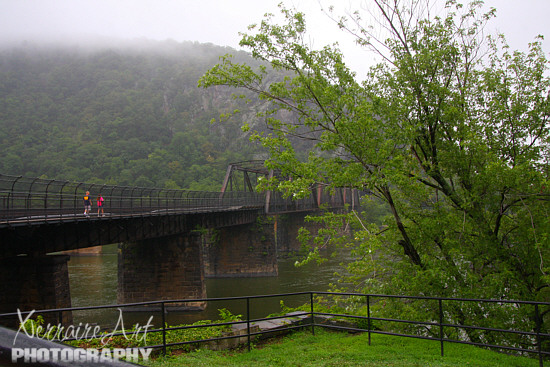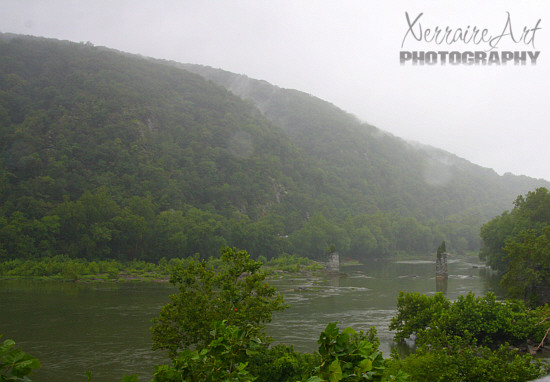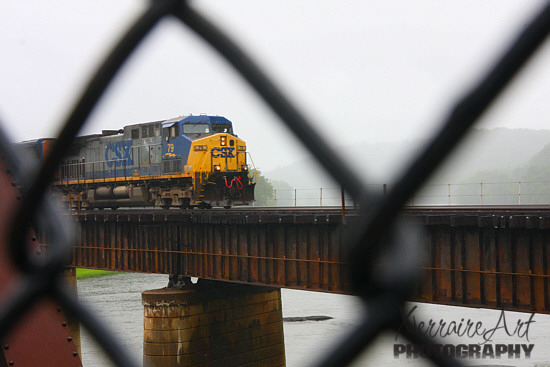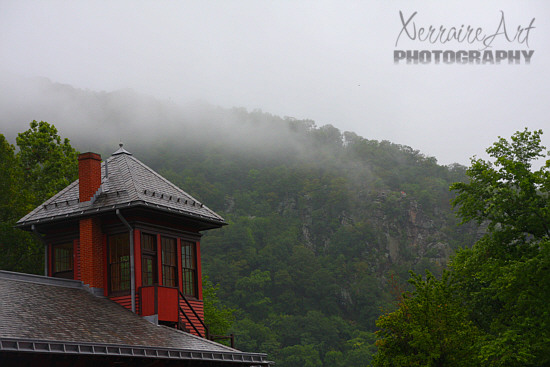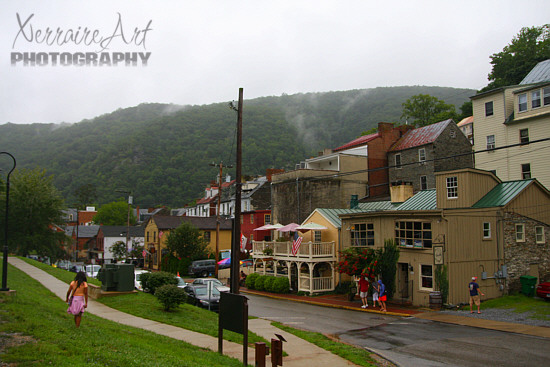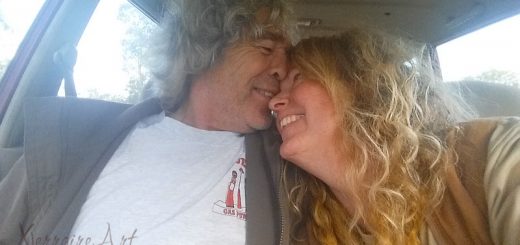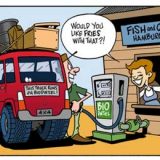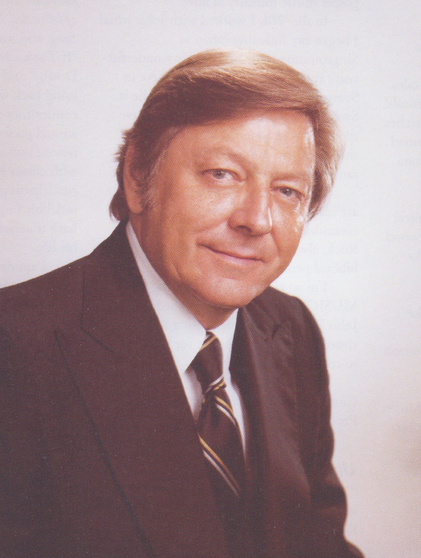Harpers Ferry with Alejandra and Jenny
For our last outing before Alejandra had to leave, I decided on one of my most favorite places on earth, Harpers Ferry. For our trip we ended up having rain, so to protect my camera, photo taking was unfortunately at a minimum. I do have many posted here from other visits.
One of the things that makes Harper’s Ferry so special is it has something for everyone. History buffs love it, hikers, nature lovers, photographers, artists, athletes, rafters, rock climbers, craft lovers, antique enthusiasts, minerals turned into jewelry shoppers, and those who just want a leisurely stroll up a 100 stone steps up a mountain.
Harpers Ferry is a historic town in Jefferson County, West Virginia, United States. It was formerly Harper’s Ferry with an apostrophe and that form continues to appear in some references. It is situated at the confluence of the Potomac and Shenandoah rivers where the U.S. states of Maryland, Virginia and West Virginia meet. The town is located on a low-lying flood plain created by the two rivers and surrounded by higher ground. Historically, Harpers Ferry is best known for John Brown’s raid on the Armory in 1859 and its role in the American Civil War. As of the 2010 United States Census, the town had a population of 286.
The lower part of Harpers Ferry is located within Harpers Ferry National Historical Park. Most of the remainder, which includes the more highly populated area, is included in the separate Harpers Ferry Historic District. Two other National Register of Historic Places properties adjoin the town: the B & O Railroad Potomac River Crossing and St. Peter’s Roman Catholic Church.
The Appalachian Trail Conservancy (ATC) headquarters is located in Harpers Ferry and the town is one of only a few through which the Appalachian Trail passes directly. Harpers Ferry is also an outdoor recreation destination. Popular activities include white water rafting, fishing, mountain biking, tubing, canoeing, hiking, zip lining, and rock climbing.
In about 1750 the English colonist Robert Harper was given a patent on 125 acres (0.51 km2) at the present location of the town. In 1761 Harper established a ferry across the Potomac, making the town a starting point for European-American settlers moving into the Shenandoah Valley and further west. In 1763 the Virginia General Assembly established the town of “Shenandoah Falls at Mr. Harper’s Ferry.”
On October 25, 1783, Thomas Jefferson visited Harpers Ferry. He viewed “the passage of the Potomac through the Blue Ridge” from a rock which is now named for him. This stop took place as Jefferson was traveling to Philadelphia and passed through Harpers Ferry with his daughter Patsy. Jefferson called the site “perhaps one of the most stupendous scenes in nature.”
George Washington, as president of the Patowmack Company (which was formed to complete river improvements on the Potomac and its tributaries), traveled to Harpers Ferry during the summer of 1785 to determine the need for bypass canals. In 1794 Washington’s familiarity with the area led him to propose the site for a new United States armory and arsenal. Some of Washington’s family moved to the area; his great-great-nephew, Colonel Lewis Washington, was held hostage during John Brown’s raid in 1859, and George’s brother Charles Washington founded the nearby Jefferson County town of Charles Town.
In 1796 the federal government purchased a 125-acre (0.5 km2) parcel of land from the heirs of Robert Harper. In 1799 construction began on the United States Armory and Arsenal at Harpers Ferry. This was one of only two such facilities in the U.S., the other being Springfield, Massachusetts. Together they produced most of the small arms for the U.S. Army. The town was transformed into an industrial center; between 1801 and 1861, when it was destroyed to prevent capture during the Civil War, the armory produced more than 600,000 muskets, rifles and pistols. Inventor Captain John H. Hall pioneered the use of interchangeable parts in firearms manufactured at his rifle works at the armory between 1820 and 1840; his M1819 Hall rifle was the first breech-loading weapon adopted by the U.S. Army.
Industrialization continued in 1833 when the Chesapeake & Ohio Canal reached Harpers Ferry, linking it with Washington, D.C. A year later, the Baltimore & Ohio Railroad began train service through the town.
On October 16, 1859, the radical abolitionist John Brown led a group of 21 men in a raid on the arsenal. Five of the men were African American: three free African Americans, one a freed slave and one a fugitive slave. During this time assisting fugitive slaves was illegal under the Fugitive Slave Act. Brown attacked and captured several buildings; he hoped to use the captured weapons to initiate a slave uprising throughout the South. The first shot mortally wounded Hayward Shepherd,[6] a free black man who had been a night baggage porter for the B&O Railroad running through Harpers Ferry near the armory. The noise from that shot roused Dr. John Starry from his sleep shortly after 1:00 am. He walked from his nearby home to investigate the shooting and was confronted by Brown’s men. Starry stated that he was a doctor but could do nothing more for Shepherd, and Brown’s men allowed him to leave. Instead of going home Starry went to the livery and rode to neighboring towns and villages, alerting residents to the raid.
When he reached nearby Charles Town, they rang the church bells and aroused the citizens from their sleep. John Brown’s men were quickly pinned down by local citizens and militia, and forced to take refuge in the engine house adjacent to the armory.
The secretary of war asked for the assistance of the Navy Department for a unit of United States Marines, the nearest troops. Lieutenant Israel Greene was ordered to take a force of 86 Marines to the town. In need of an officer to lead the expedition, U.S. Army Lieutenant Colonel Robert E. Lee was found on leave nearby and was assigned as commander along with Lt. J. E. B. Stuart as his aide-de-camp. Lee led the unit in his regular civilian clothes, as none of his uniforms was available when he accepted the command. The whole contingent arrived by train on October 18, and after negotiation failed they stormed the fire house and captured most of the raiders, killing a few and suffering a single casualty themselves. Brown was tried for treason against the State of Virginia, convicted and hanged in nearby Charles Town. Starry’s testimony was integral to his conviction. Following the prosecution (by Andrew Hunter), “John Brown captured the attention of the nation like no other abolitionist or slave owner before or since.” The Marines returned to their barracks and Col. Lee returned to finish his leave. The raid was a catalyst for the Civil War.
Civil WarThe Civil War was disastrous for Harpers Ferry, which changed hands eight times between 1861 and 1865. When Virginia seceded in April 1861, the U.S. garrison attempted to burn the arsenal and destroy the machinery, to prevent the Confederates from using it. Locals saved the equipment, which the Confederate Army transferred to a more secure location in its capital of Richmond. The US Army never renewed arms production in Harpers Ferry.
Because of the town’s strategic location on the railroad and at the northern end of the Shenandoah Valley, both Union and Confederate troops moved through Harpers Ferry frequently. The town’s garrison of 14,000 Federal troops played a key role in the Confederate invasion of Maryland in September 1862. Gen. Robert E. Lee did not want to continue on to Maryland without capturing the town. It was on his supply line and could control one of his possible routes of retreat if the invasion did not go well.
Dividing his army of approximately 40,000 into four sections, Lee used the cover of the mountains to send three columns under Stonewall Jackson to surround and capture the town.
The Battle of Harpers Ferry started with light fighting September 13 as the Confederates tried to capture the Maryland Heights to the northeast, while John Walker moved back over the Potomac to capture Loudoun Heights south of town. After a Confederate artillery bombardment on September 14 and 15, the Federal garrison surrendered. With 12,419 Federal troops captured, the surrender at Harpers Ferry was the largest surrender of US military personnel until the Battle of Bataan in World War II.
Because of the delay in capturing Harpers Ferry and the movement of Federal forces to the west, Lee was forced to regroup at the town of Sharpsburg. Two days later he commanded troops in the Battle of Antietam, which had the highest number of deaths among troops of any single day in United States military history.
By July 1864, the Union again had control of Harpers Ferry. On 4 July 1864, the Union commanding Gen. Franz Sigel withdrew his troops to Maryland Heights. From there he resisted Jubal Anderson Early’s attempt to enter the town and drive the Federal garrison from Maryland Heights.
So you can see the attraction for history buffs. 🙂
But it’s a wild and wonderful place to take our visitor from Spain…One of the first things I noticed and was surprised about, that in spite of the rain the place was still very busy and my hopes for a close parking space looked dim. Well, we did find a teeny weeny space, and with my angle though was never going to make it. So, as Jenny suggested the only way to do it was to back in. Well, with the help of my two lookouts, I managed!
First to the ladies room, then a trip to the bookstore, a lesson on Harpers Ferry flooding, and we were off up the side of the mountain! (more on the floods of Harpers Ferry here)
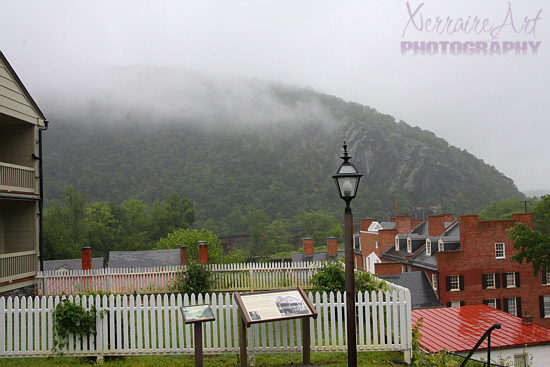
We climbed up the steps to see the view from Jefferson rock, about half way up, I could tell we weren’t going to get much of a view, the mountains were much covered in low clouds.
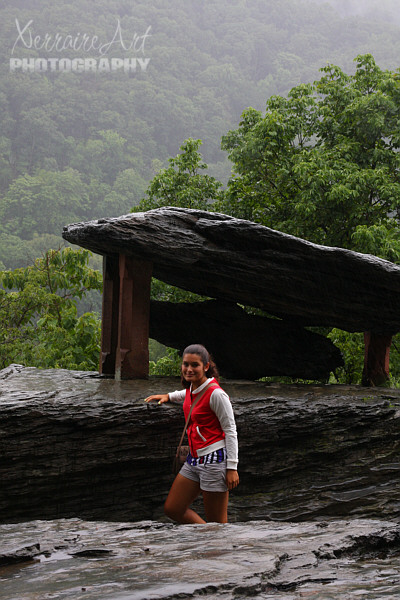
Alejandra poses in front of Jefferson Rock, named after our 3rd president of the United States and the main author of the Declaration of Independence.
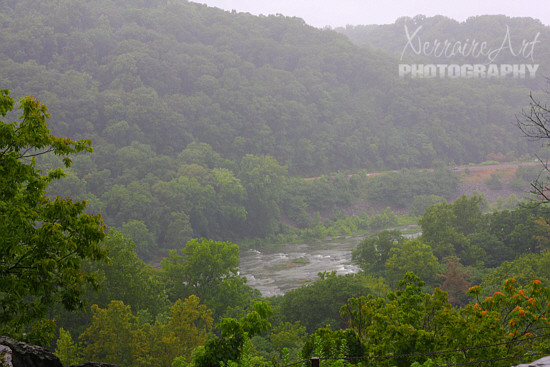
The normal view was so cloudy, that I instead looked to the right and preferred to take a photo of the rapids below. Alejandra was fascinated by them.

